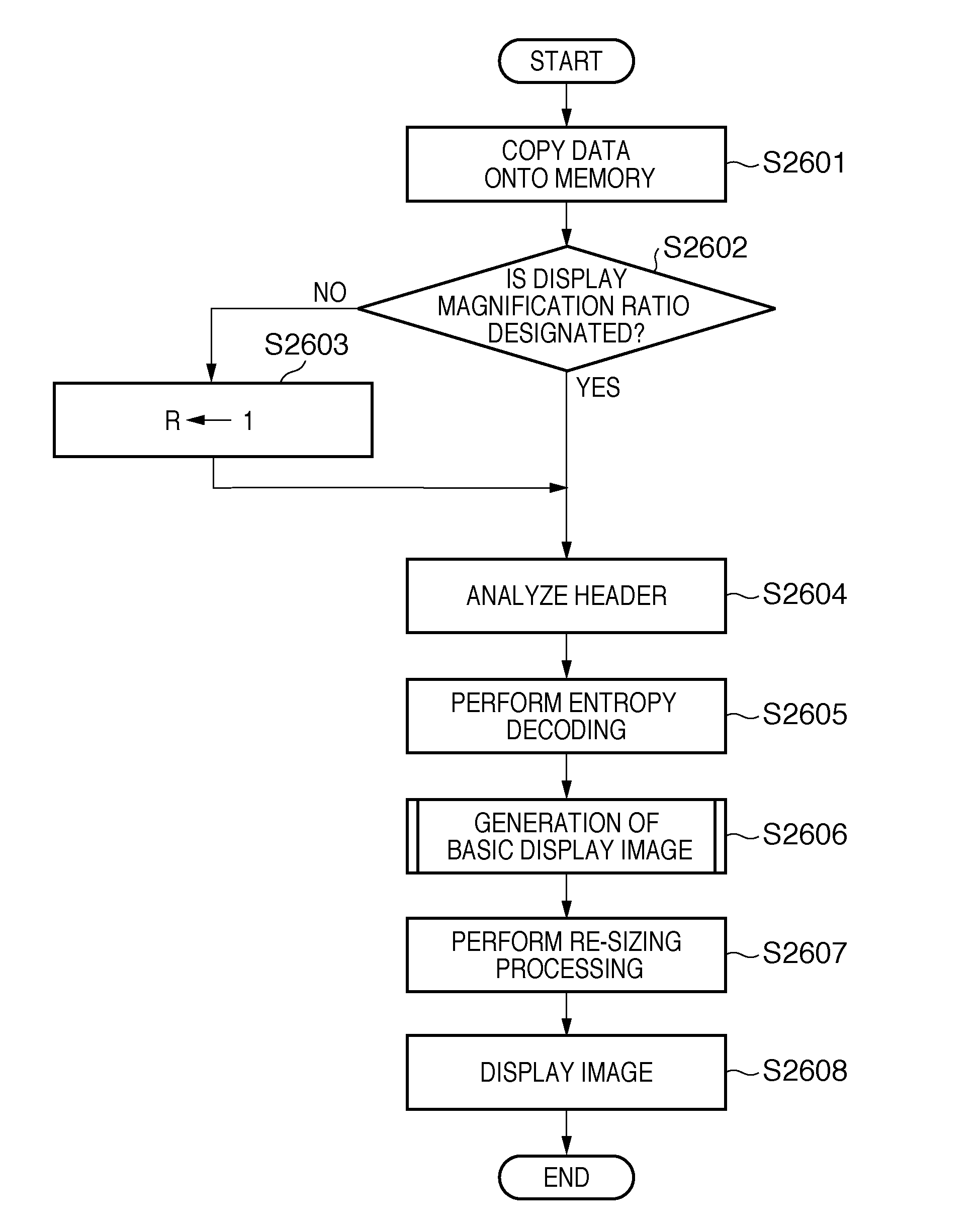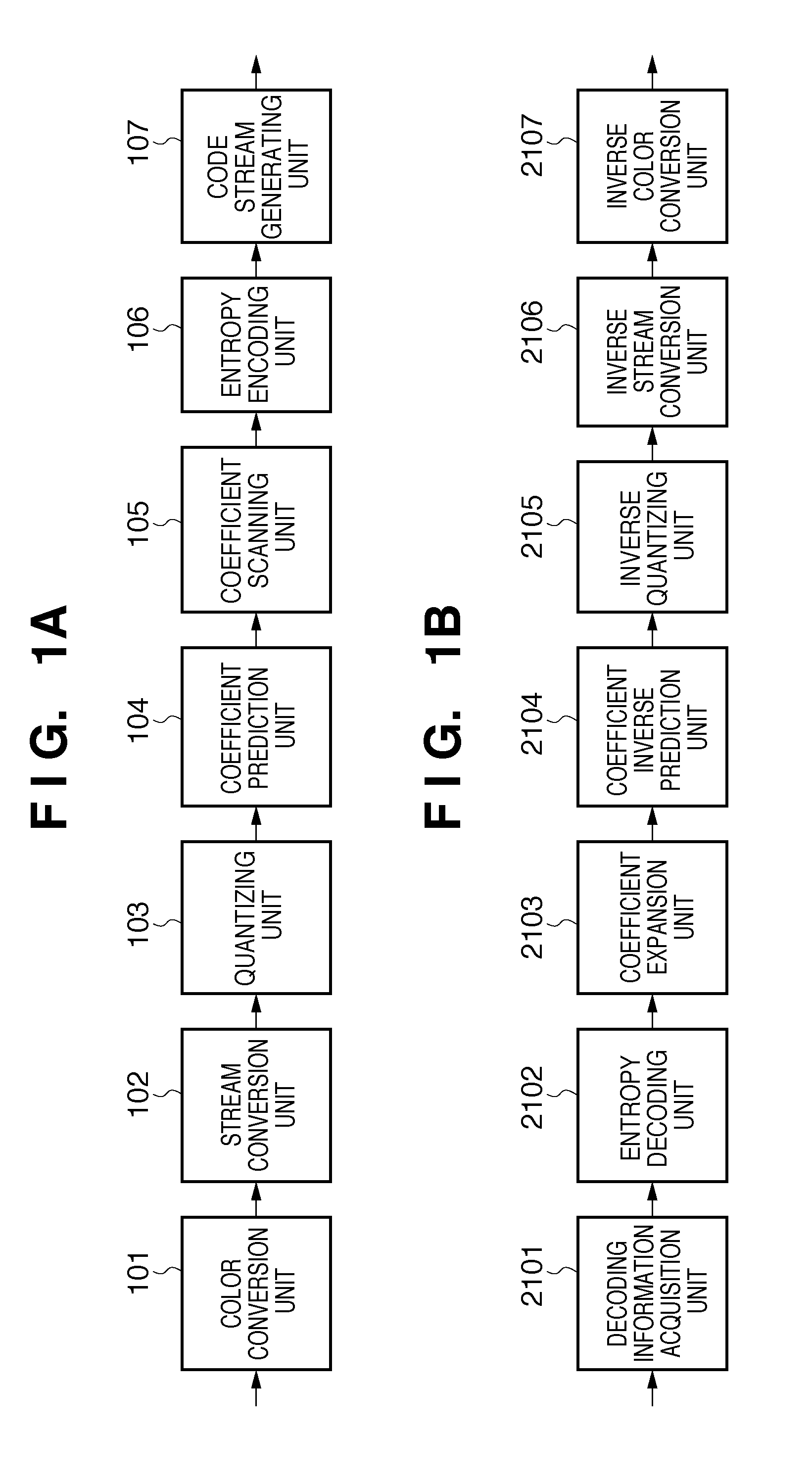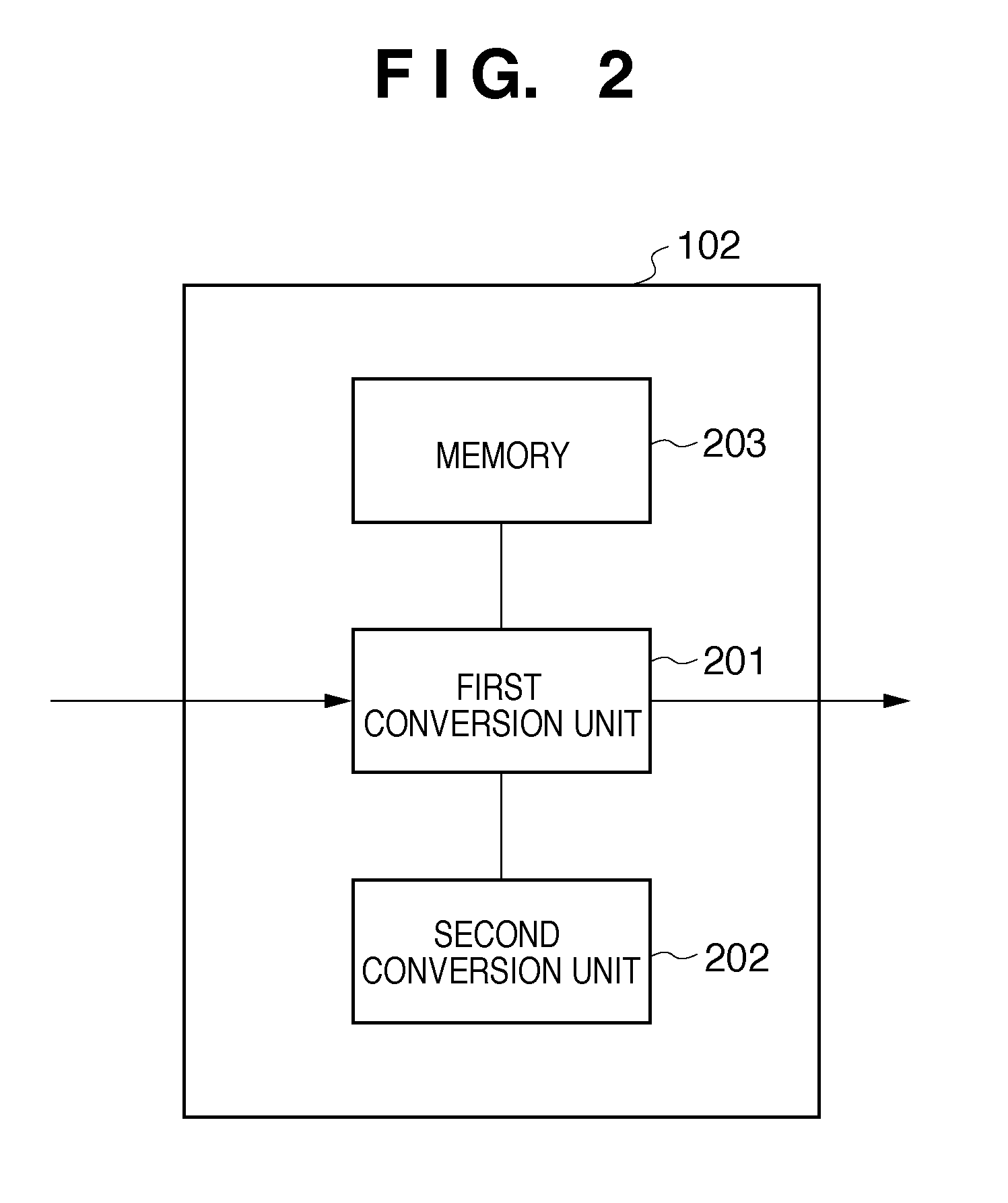Image decoding apparatus and control method for speeding up decoding processing
a decoding apparatus and image technology, applied in the field of decoding techniques for encoded image data, can solve the problems of delay in display, double or more calculation cost of stream conversion processing, and much lower resolution of display devices used in personal computers and the like, so as to speed up decoding processing and reduce the influence of omission of processes on image quality
- Summary
- Abstract
- Description
- Claims
- Application Information
AI Technical Summary
Benefits of technology
Problems solved by technology
Method used
Image
Examples
first embodiment
[0042][First Embodiment]
[0043]The technique (JPEG XR) based on reference 1 described above and the like has a block distortion suppression function used in encoding. The suppression processing is optional. That is, the user can designate one of the following three options: (1) perform no processing; (2) perform processing once before first stream conversion; and (3) perform processing once before first stream conversion, and once before second stream conversion. Option (1) allows high-speed encoding and decoding without any distortion suppressing effect. Option (3) provides a strong distortion suppressing effect, even though the encoding and decoding speeds are low. Option (2) comes between option (1) and option (3) in terms of effects. FIG. 22A shows a summary of the above description. Referring to FIG. 22A, “PCT” indicates stream conversion (frequency conversion) processing, and “POT” indicates distortion suppression processing.
[0044]Decoding processing is inverse to encoding proc...
second embodiment
[0151][Second Embodiment]
[0152]The first embodiment has exemplified the method in the processing of performing frequency conversion (PCT processing) 0, 1, or 2 times at the time of encoding and decoding. The second embodiment will exemplify a case in which frequency conversion is performed once at the time of encoding and decoding, and block overlap processing (POT processing) is performed 0 or 1 times.
[0153]The apparatus arrangement of the second embodiment is the same as that of the first embodiment except for the above point. For this reason, the difference between the embodiments will be described below. A storage device in the second embodiment determines a variable magnification ratio R by using only one threshold Th1 (Th1=½ in FIG. 23B) when image data is decoded and displayed, as shown in FIG. 23B.
[0154]At the time of decoding, if the variable magnification ratio R designated by the user is larger than the threshold Th1, setting distortion suppression processing to “non-exec...
third embodiment
[0157][Third Embodiment]
[0158]The second embodiment has exemplified the method providing one threshold Th1. However, it is possible to provide another threshold Th2 to perform a processing procedure for enlarging DC components. In the second embodiment, it is possible to fix r=½ in accordance with changes in resolution by ½ at a time as in JPEG2000 and the like. In this case, when decoding an image with ½ resolution, it is possible to perform level correction processing instead of inverse processing. The second embodiment has exemplified the case in which block overlap processing is always performed at the time of encoding. However, it is possible to provide this function as an optional function. Although the embodiment has exemplified the method of suppressing block-like distortion by performing block overlap processing, it is possible to use methods using various types of filters which are not applied across blocks. Although the method of correcting a dynamic range has been descri...
PUM
 Login to View More
Login to View More Abstract
Description
Claims
Application Information
 Login to View More
Login to View More - R&D
- Intellectual Property
- Life Sciences
- Materials
- Tech Scout
- Unparalleled Data Quality
- Higher Quality Content
- 60% Fewer Hallucinations
Browse by: Latest US Patents, China's latest patents, Technical Efficacy Thesaurus, Application Domain, Technology Topic, Popular Technical Reports.
© 2025 PatSnap. All rights reserved.Legal|Privacy policy|Modern Slavery Act Transparency Statement|Sitemap|About US| Contact US: help@patsnap.com



